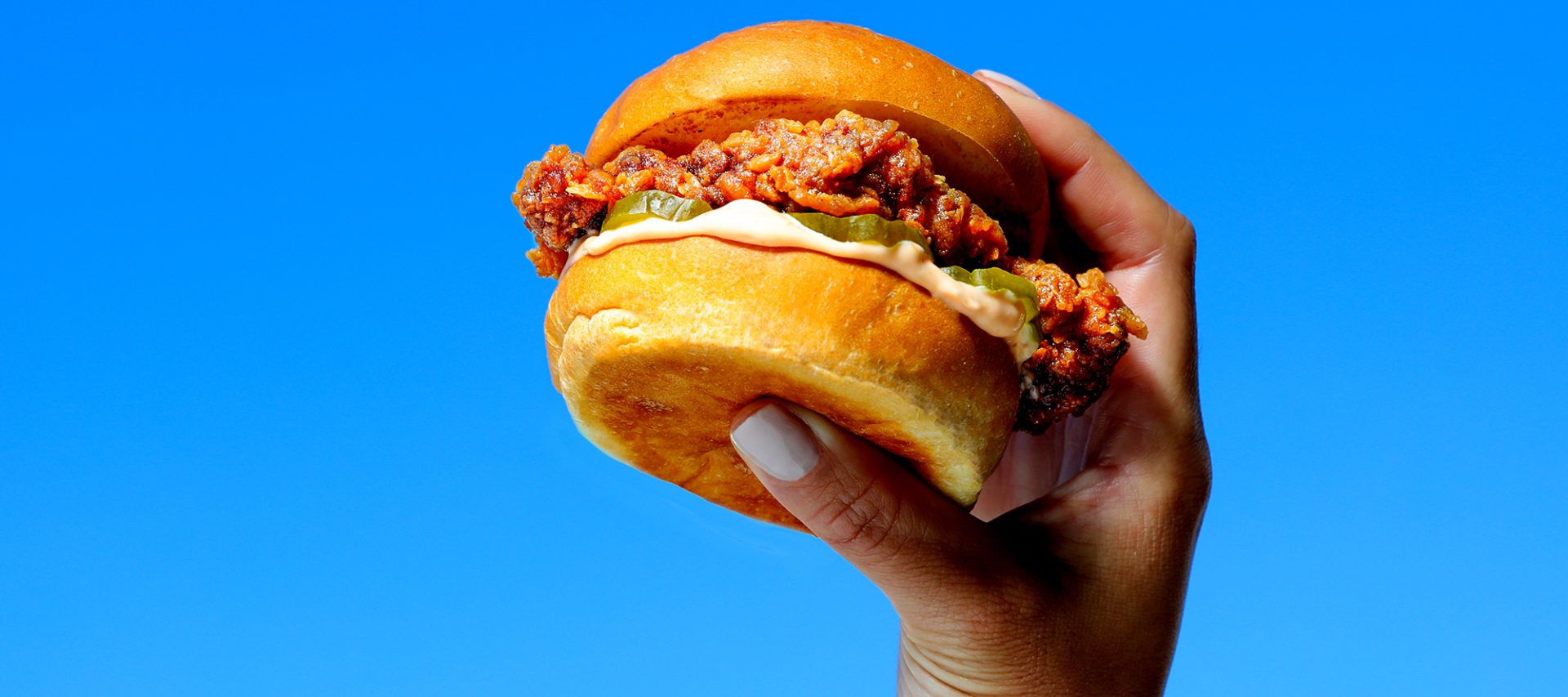

In her community, it’s common knowledge that my mom is a soft touch when it comes to chickens. She maintains a motley flock of adoptees — backyard hens whose owners have moved, scrawny layers too old to be worth their feed, the pets of children who never much wanted them in the first place. She knows most of the people who donate the birds, or at least knows how they connect to her capacious social circle. But a few years ago, a complete stranger arrived at her door. He came bearing two bony, adolescent chicks, pink skin showing through their white feathers, their beaks and feet comically outsized. He’d bought them as an Easter present for his grandkids, and rather than petite, pretty hens, they had turned into gangly monstrosities.
Mom spotted them for the woefully underfed meat birds they were, but she nevertheless took them in. One died almost immediately, whether of natural causes or at the teeth of a fox no one remembers. The other survived. It grew and grew and ate and grew some more, inflating until it weighed some twenty pounds, more than three times as much as a standard laying hen. Released from the pen for their morning constitutional, the other members of the flock would dart about after bugs and shoots. They’d take dust baths and cluck and squabble. The lone broiler would do all this too, but at half speed. While the araucana and barred rock chickens swiftly tacked about the large patch of hosta that curled around the back deck, the broiler would plod through it like a miniature white tugboat. Perhaps because of her size, she moved with uncommon deliberateness, as if taking each step only after a great deal of thought. She walked, and the leaves parted before the prow of her serene, unflighty chest.
For the past century, agriculture in America has been getting more productive and more efficient. After stagnating for decades at twenty-something bushels per acre, average corn yields have risen to nearly two hundred. Horses have been replaced by horsepower. Chicken meat, once a relatively rare byproduct of the egg industry, has become the most consumed meat in the country, a shift made possible by advances in genetics and feed. Now over a billion dollars, from sources as varied as Bill Gates, venture capital funds, and agribusiness giants, have been invested in the idea that the next big thing in food is to leave farming behind, at least the livestock part of it. Instead of growing chicken meat in a chicken, why not grow it in a test tube?
In June, U.S. regulators for the first time gave two California companies, Upside Foods and GOOD Meat, a green light for offering lab-grown chicken to American consumers, with star chef José Andrés becoming the first to cook it for his guests in July. The menu of his restaurant China Chilcano in Washington, D.C. now boasts “a tour of Peruvian cuisine beginning with our cultivated chicken anticucho from GOOD Meat” for the price of $70.
The arrival of lab-grown chicken in America marks a radical change to the food system, but it is also a logical extension of the progression of agriculture. A chicken breast cultured in a vat and one taken from a factory farm broiler are both products of the same miraculous, troubled system. The single-minded pursuit of efficiency that is largely responsible for this system has caused immense damage to the social fabric of rural communities, to some — though certainly not all — parts of the environment, and to the fundamental connection between place, food, and human beings. But it has also allowed food production to more than keep pace with the demands of a growing population. The modern food system feeds the largest human population ever, at historically low rates of famine.
Continuing to avoid global famine is the most important goal of this system. That means any critique of the trajectory of agriculture, even when it involves a change as profound as moving meat production from the factory farm to literal meat factories, must be balanced against this goal. Is it possible to sustain the bounty yielded by our modernized food system but also temper its excesses, or even reform it into something better?
Today chicken meat is as thoroughly commodified as the flesh of a once-sentient creature can be. Three companies control the global supply of broiler chicken genetics. Each maintains four distinct populations, two of which are crossed to produce hens, two of which are crossed to produce roosters. These roosters and hens are sold to commercial hatcheries, where their eggs are collected and put in incubators. Once hatched, the chicks are in turn sold to farms, where they live out their brief lives, fed a carefully calibrated ration. Then it’s off to the slaughterhouse to be turned into thighs, drums, and, most importantly, boneless, skinless chicken breast. A typical broiler exists for about two months from laying to death: three weeks of development in an egg followed by five to six weeks of incredibly rapid growth.
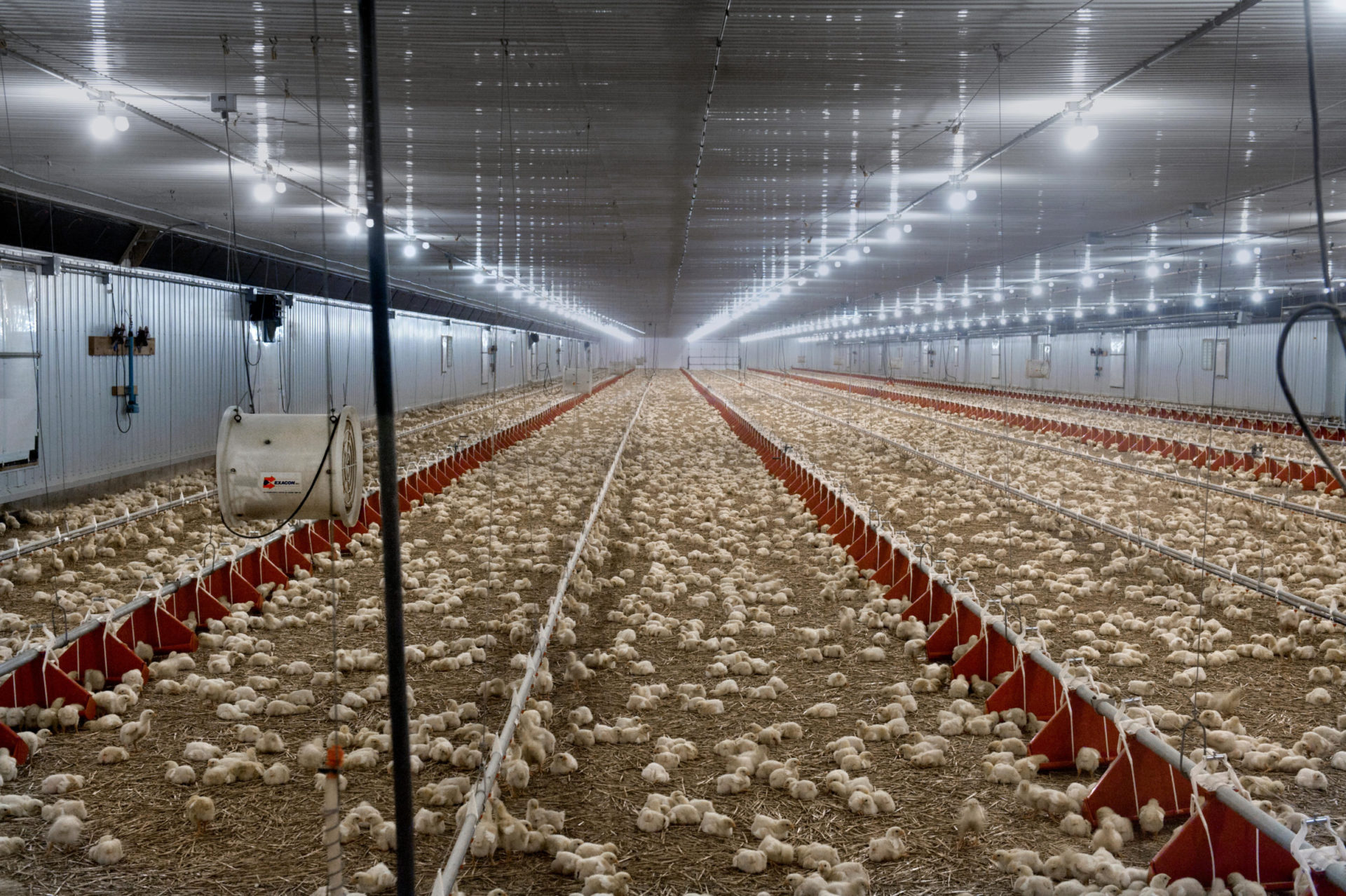
The organizing principle is efficiency, achieved by maximizing the closely linked traits of breast size, growth rate, and feed conversion, which is a measure of the pounds of feed required to produce a pound of live weight in a chicken. All of the carefully managed breeding leads to a high degree of heterosis, also known as hybrid vigor, a phenomenon common to both plants and animals in which the offspring of two unrelated parents will usually grow larger and faster with fewer health issues than a purebred. Using four unrelated genetic lines compounds the effect, and also allows for the selection of ancillary traits, such as maintaining adequate egg production in hens.
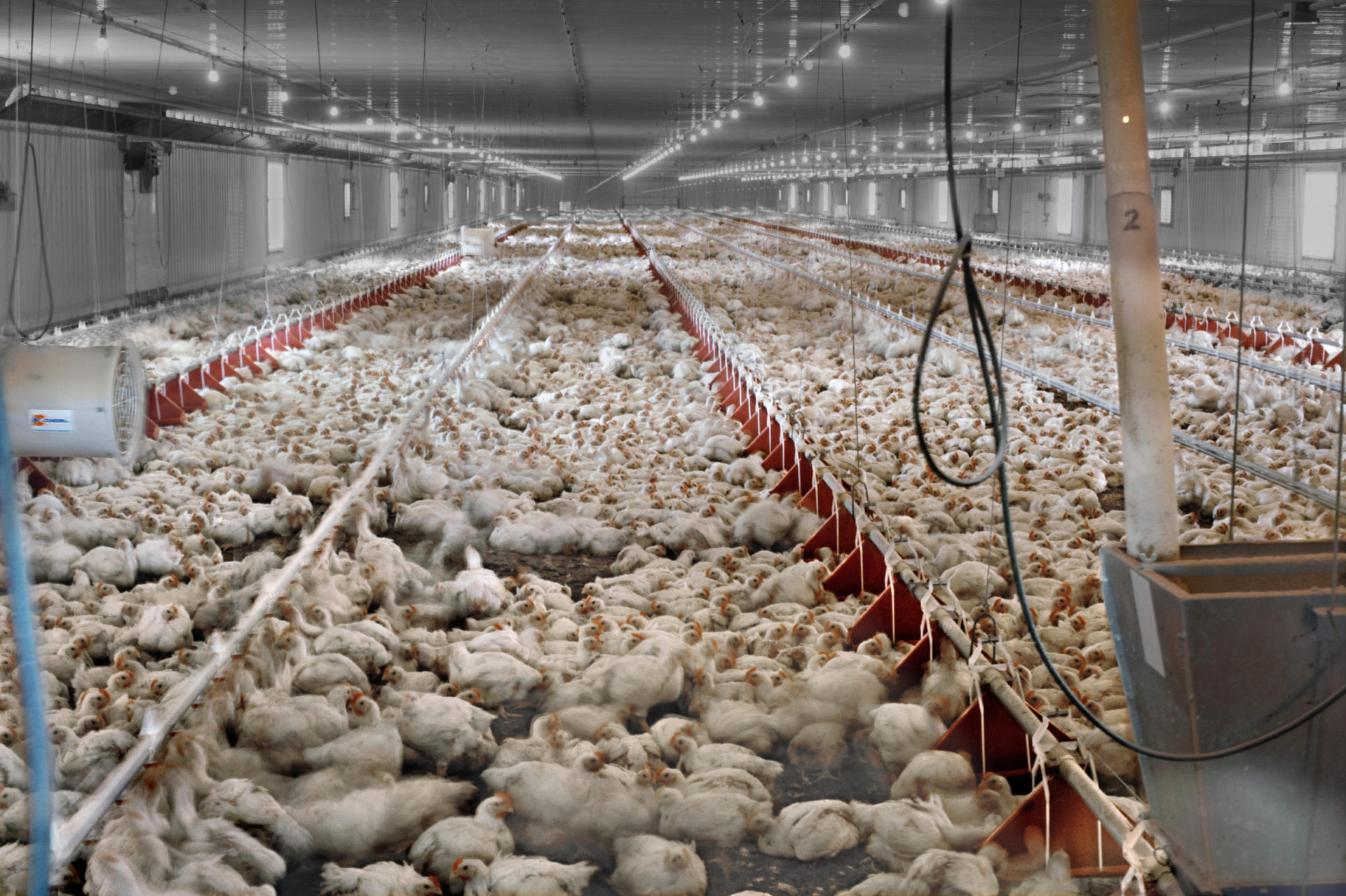
Each level of the industry is specialized: genetics companies focus on developing proprietary breeding programs in biosecure facilities, hatcheries produce chicks at scale, and farmers oversee the growing phase of the chickens’ lives. Though the farmers are often self-employed, they are far from self-directed. Everything from the construction of the chicken barns to the timing and number of chickens raised to the details of the feed program is dictated by Perdue or Tyson or one of a handful of other large agribusiness companies. Finally, the chickens go through a slaughterhouse, where their carcasses are shackled to a disassembly line that moves them past workers and inspectors at rates of up to three birds per second.
More than any other animal, a meat chicken is a factory product. The hen you see pecking around your neighbor’s yard is still a chicken, living a chicken’s life much like chickens have ever since they stopped being wild junglefowl. The bird in the broiler house is something less. It might still have the capacity to scratch and peck, but it will never have the opportunity. It exists solely to convert feed to muscle, though to do so it requires annoyances like feathers, bones, a digestive tract, and a small but recalcitrant brain, from which no amount of breeding will remove certain distinctly chicken-ish desires. It is a unit optimized for the production of lean breast meat, but one that remains frustratingly bounded by its creaturehood.
Viewed this way, growing chicken cells in a bioreactor, producing what is called either “cultured” or “lab-grown meat,” just makes sense. Instead of optimizing for muscle growth in a chicken, with all the externalities that accompany raising livestock at scale, lab-grown meat takes the most economically valuable part of the bird and cultivates it in isolation. Rather than carefully selected lines of poultry, it utilizes carefully selected lines of cells. Rather than converting corn and soy to meat via an animal, a slurry of nutrients convert directly to muscle with no intermediary. Rather than traveling to a slaughterhouse, the output of a bioreactor can be shaped and packed at the point of production. In theory, a lab-grown meat factory should produce lean chicken more efficiently than a real chicken ever could.
There are other prospective benefits. Though the industry is too young to provide reliable numbers, lab-grown chicken would almost certainly require less land per calorie, and possibly less energy overall. Jobs in lab-grown meat factories would be far less brutal than working on a slaughterhouse line. Finally, the consciousness of all those billions of birds, whose quality of life must be managed just well enough to not turn the stomachs of too many consumers, would simply vanish from the conversation.
Here are just a few of the practices meat chickens are subjected to. If given the choice, hens at the hatchery will eat enough to reduce their production of viable offspring, so it is a standard industry practice to restrict their feeding. The extreme growth rate of the broilers themselves, going from four ounces to five pounds in a matter of weeks, comes with frequent leg problems and demands such specific nutritional requirements that even a small error in feed composition can cause skeletal malformations. Broilers live entirely indoors, standing in their own manure and surrounded by tens of thousands of other chickens. At the slaughterhouse they are shackled upside down to a rapidly moving chain, which first dunks them in an electrified bath to knock them out, then moves them past a blade that opens their necks, and then puts them in scalding water to facilitate the removal of feathers. When the process works as designed, the chickens are rendered insensate in the stunning tank, but the speed means some birds pass through the tank still conscious, and some of those miss the kill step and are consequently scalded alive. The meat chicken industry has embraced such practices as the price of efficiency. In doing so it has created a situation in which lab-grown meat would be an unambiguous improvement.
The question is whether lab-grown meat will ever actually make it to the supermarket. The first obstacle is economic. Superficially, the industry appears to be on track: dozens of lab-grown meat companies have produced their own discs of petri dish protein to impress prospective investors and credulous reporters; for several years a restaurant in Singapore has been serving lab-grown chicken, and with the recent approval by U.S. regulators, it is now available in a Washington, D.C. restaurant; late last year Believer Meats broke ground on a commercial production facility in North Carolina.
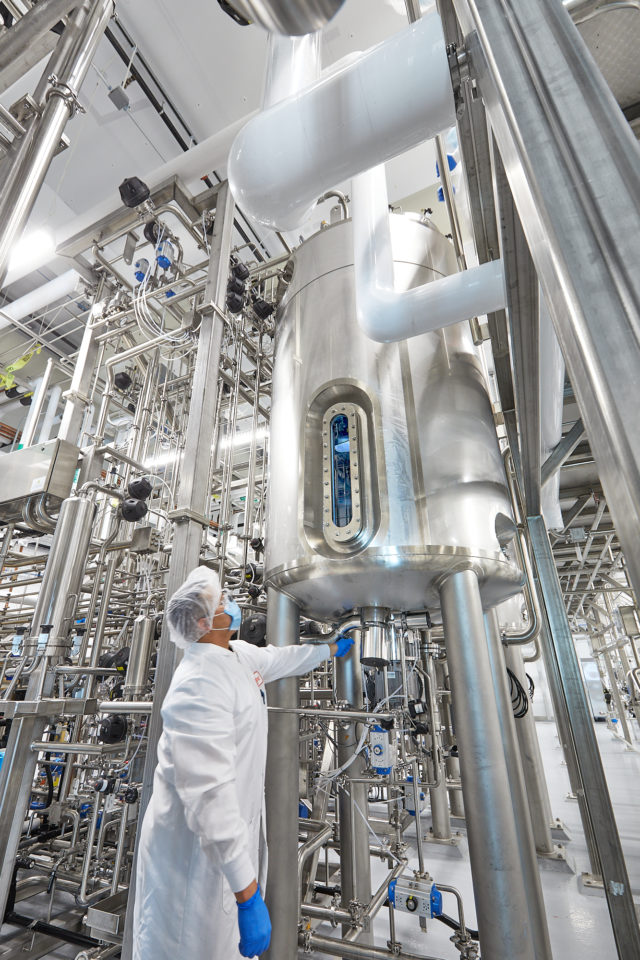
Yet it remains unclear if it will ever be possible to deploy the technology at a large enough scale and low enough cost to compete with industrial chicken farming, which has managed to become remarkably efficient given biological limitations. While chicken cells can multiply in a bioreactor of the sort already in use for various medical applications, this method is far too expensive to deploy for commercial food production. Lab-grown meat companies claim to have solved, or to be solving, the numerous cost challenges that come with scaling the process, from designing new bioreactors to developing cheaper growing mediums to identifying efficient cell lines to shaping and packaging the finished product. But because they all rely on continuing infusions of capital to stay afloat, they have a strong incentive to say exactly this, regardless of the reality in their labs.
In the past ten years, numerous companies and research institutions focused on lab-grown meat have been predicting the imminent arrival of widely available products, and the repeated failure of these predictions has not dampened the enthusiasm for continued prognostication. The industry has been employing a Silicon Valley “fake it till you make it” approach, and so far there is more evidence for the faking than the making. But the challenge is that, with a trillion-dollar global meat industry just waiting to be disrupted, everyone involved is loath to disclose the details of their purported advances to scrutiny by competitors or outside experts. There is no way to distinguish a company that has actually made a breakthrough from one that is pretending it has made a breakthrough. Lab-grown meat could arrive in butcher cases next year, or it could remain a novelty found only on the menus of expensive restaurants, with producers folding one by one as production costs fail to achieve parity with conventional meat.
The second obstacle, if lab-grown meat does come to market, is whether anyone will want to eat it. There isn’t much good research on the subject, but a 2020 meta-analysis found that consumers intuitively question the safety and nutritional quality of lab-grown meat due to its perceived “unnaturalness.” The ubiquity of once-novel foods such as artificial sweeteners, margarine, energy drinks, almond milk, Kool-Aid, Velveeta, Fruit Loops, Doritos, and so on suggest that these doubts will not be a strong bulwark. But there is something particularly visceral about lab-grown meat, so perhaps its adoption will face stiffer headwinds than other novel foods. Still, if it manages to be cheaper than animal meat, and if the early adopters don’t all die of some mysterious disease, most people will be unlikely to pay the real chicken upcharge at KFC for very long.
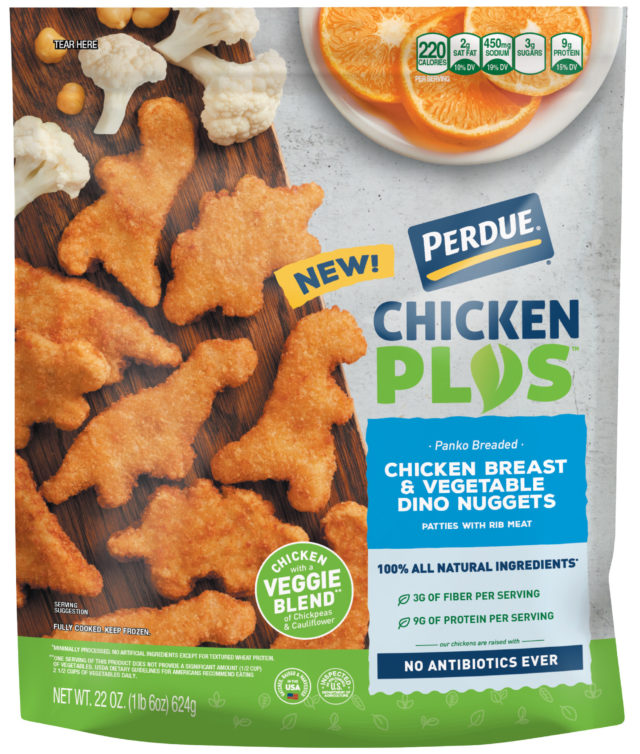
In its monomaniacal pursuit of efficiency, the conventional chicken industry has made ethical compromises that leave no ground on which to build an argument against lab-grown meat beyond whether it will be too expensive or make people sick. Any convincing ethical argument against lab-grown meat must therefore also make the case for something better than the status quo. It must explicitly claim that efficiency is not enough.
As I set out to make this argument, I already hear a growing chorus of voices rising in response — UC Davis agronomists in their offices, Iowa corn farmers in their 400-horsepower tractors, Tel Aviv scientists tending their bioreactors of chicken slurry — all shouting in unison that efficiency feeds the world.
I readily concede the point. Any critique of the existing food system must reckon with the miracle it has performed in the past century. By cranking out an excess of calories year after year and decade after decade, modern agriculture has transformed hunger from a problem of production to a problem of distribution. Famines are less frequent and shorter. Rates of undernourishment have been steadily declining since the 1970s. Chicken meat, once a comparative luxury, is now a contender for the most widely consumed animal protein globally. The Green Revolution defused The Population Bomb.
But it truly is an excess of calories, especially in the United States. Beyond the fact that here overnutrition is a far more common problem than hunger, more than a third of the U.S. corn crop, over five billion bushels produced on roughly thirty million acres, is converted to ethanol every year and burned in combustion engines. While efficiency is not just good but necessary for feeding a planet of eight billion people, pursuing it to the preclusion of other considerations leads to these sorts of wasteful pathologies, along with all the margin-fattening cruelties that beset the meat-chicken industry.
An alternative form of broiler production might trade some small part of this efficiency for improved production methods. Individual farmers could raise tens of thousands rather than hundreds of thousands of birds, and they could do so in portable housing moved across a living landscape, ideally on fields that would later be used for crops or to graze ruminants. The chickens themselves might be bred for slightly worse feed conversion in exchange for better mobility, which would allow them to forage for a little of the greenery beneath their feet. Such a shift would not be a return to inefficient smallholders with backyard flocks, but it would at least attempt to reintegrate chickens into a more functional agricultural ecosystem.
But I’m not as interested in arguing for one particular alternative approach to farming as I am in pointing out that maximum yield at minimum cost need not be the sole imperative of agriculture. The reason we don’t raise chickens in the manner just described, or make more modest reforms having to do with space per bird, bedding, and environmental enrichment, is not any practical impediment, at least not primarily. The deeper problem is that commodified consumption has grown in lockstep with commodified production, because the public remains enthusiastic for cheaper meat above all else.
When survey respondents object to lab-grown meat on the grounds of unnaturalness, I think they are having the intuition that atomizing a chicken, extracting the one commercially viable part of it and discarding the rest, is bad in a deeper sense than can be captured by the utilitarian calculus of health and land use. I hope most of them would have a similar intuition if informed about some of the more unsavory details of commercial chicken production. While this line of inquiry might be enough to prompt a few people to become vegetarian, others to put time and money into sourcing their meat, and still others into raising their own chickens, most of us would simply live with the dissonance of believing cheap chicken is the product of a flawed system while succumbing to its convenience.
This echoes broader and equally impotent anxieties about the ways in which novel technologies are dislocating us individually and collectively. The difficulty of defining the wrongness of lab-grown meat has much in common with the difficulty of articulating why human relationships over social media are unsatisfying, or why living inside a phone probably isn’t the highest form of human flourishing. But because farming is so obviously, irreducibly material, it allows a distinctly grounded examination of what it means to live in a particular time and place.
One way to view agriculture as a whole, and domestication in particular, is as a mediation between the human and the inhuman. Humans seek to reshape a part of an ecosystem in a manner that provides a more predictable source of food than it otherwise would, and the ecosystem either cooperates or it doesn’t. Pithy fruit becomes sweet. Tough grain becomes starchy. Aurochs become cattle. Junglefowl become chickens. The less edible becomes more edible and the wild becomes tamer. In exchange, the apple tree needs pruning and the chicken needs feed.
Anyone who’s so much as raised a tomato in a pot has experienced the strange dissonance of killing weeds so a chosen plant can grow, and anyone who’s raised chickens has experienced the far stranger dissonance of feeling desolate at the early death of a chick that would otherwise be destined for the chopping block in a few weeks’ time. But when, after a summer of attentive work, the farming becomes food, whether it’s a tomato sandwich or grilled drumsticks, it is better than the same dish made with supermarket tomatoes or Perdue chicken.
A meal suffused with provenance is a counterpoint to the unease or numbness necessary to acquiesce to lab-grown meat, or to aisles of boxes containing endless reconfigurations of grain, sugar, fat, and flavorings. Particularly when shared with family and friends, real food fosters a sense of cohesion and rightness because it is a small but profound engagement with material reality. Disease, pests, poor weather, ignorance, bad luck, and mistakes will be part of any attempt at agriculture. In a world increasingly defined by isolation and the illusion of limitless, individualized possibilities, the slow process of setting out to grow food and then doing it is singularly salutary. Everyone who can should have a garden and a henhouse.
Harder to imagine is how commercial agriculture, especially something so unglamorous as raising chickens for meat, could serve a similar role on a broader scale. It is not as straightforward to connect a community materially to food and the land as it is to tell an individual to put a tomato plant on the back patio. There is an unavoidable tension between the reality of operating at a large scale and the human good of getting more hands in the dirt. If there is no middle ground, lab-grown meat is a reasonable alternative to the current system. But it is also a further dislocation from physical reality in a world in desperate need of contact with it. Is it possible to retain the benefits of commodified production without fully succumbing to the logic of commodification? Could the agricultural landscape be something like a collective declaration of values, designed to help us celebrate our embodied nature and the obligations and realities attendant to it?
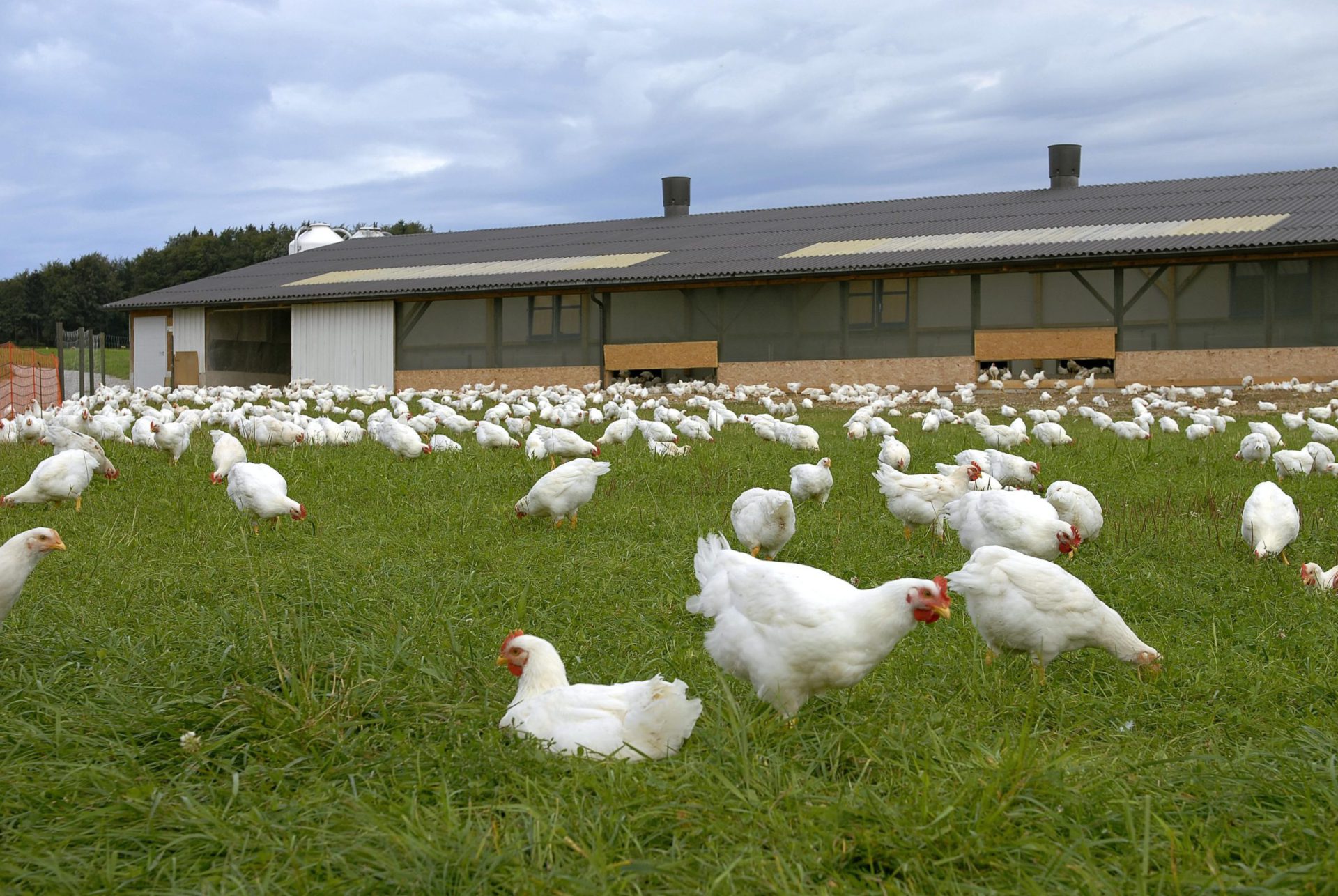
So I return to the question I asked at the beginning, without a satisfactory answer. I cannot conceive of the economic and social changes that would be required to reshape farming into a more human endeavor. The promise of the moment is that it could be done: Advances in agriculture, the ability to collectively move far beyond mere subsistence, have created a surplus that could be used for the enrichment of both farmed land and the people fed by it. The tragedy of the moment is that, barring some radical realignment, efficiency will continue to be an end unto itself, no matter the absurdity that results.
For two years, the broiler my mom kept with her other chickens drifted about, pecking up ants or standing in the sun by the front door when not at the feeder. Surrounded by her erratic, colorful compatriots, she was a picture of calm, always doing less than them, but still doing something. Like them, she ate some pests and contributed to an atmosphere of bucolic ease in the midst of the suburbs. In return for the sacks of grain she consumed over the course of her life, she offered perhaps a dozen white eggs. When she died, it was sudden, most likely due to failure of her underpowered heart. Laying hens usually live far longer, but she was a Methuselah of meat birds, surviving roughly twenty times the span for which she’d been bred. Rarer still, she ended her life not in a pot but in a grave near the compost pile.
Unlike the lives of dogs, those of chickens don’t invite eulogies. Hens make no groveling efforts to ingratiate themselves, and they never act with apparent selflessness or subterfuge. They pass through the world with a bracing disregard for qualities like loyalty or malice. Yet I sometimes remember that one lucky broiler when considering the tens of billions of her cousins who lived and died and were eaten in the time she made her stately way through the world. After all, she was a chicken exactly like them.
Exhausted by science and tech debates that go nowhere?